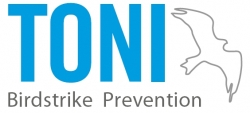TONI Bird Control Solutions GmbH & Co. KG
Airport Bird Control Solutions to Minimize Birdstrike Risk for Aircrafts / Airport Hangar Bird Control
Birdstrike prevention is an important aspect of risk management at every airport. TONI Bird control solutions provide an integrated approach to reduce birdstrikes through their Airport Bird Control Solutions. With the use of modern radar technology, birds can be detected long before they become a hazard to aircraft landing or taking off. Modern software automatically analyzes their flight path and warns the tower when a collision is likely. Thus, the tower can warn pilots and take appropriate countermeasures: acoustic and visual devices, predator birds or bird robots.
TONI provides all these and other Airport Bird Control Solutions: Netting of hangers and bird control at airports buildings. Training of airport bird control staff is also one of its services.
There are numerous ways to reduce the risk of bird strikes to aircraft, but the first step is always to locate birds before. Only after precisely locating them, can airfield staff respond accordingly. TONI Birdstrike Prevention uses radar systems to monitor birds in the air.
The latest radar technology enables birds’ location to be precisely determined in all weather conditions TONI employs S-band (100 mm) radars with a range of 6-8 nm, which can detect flying objects as small as 2 mm in size. Cutting-edge software analyses all incoming data and classifies it based on its flight behavior. By this means, birds can be distinguished from other airborne objects such as precipitation, insects, and aircraft.
A single, small bird represents a very low risk. A flock of such birds, however, can pose as much risk or more so than a single large bird. Be it a small bird, a large bird, an individual, or a flock, radar reflectivity allows any and all birds in the air to be immediately classified according to potential risk.
Company Profile
-
AIRPORT Bird control
The problem of birdstrikes is as old as the aviation industry. As airports grow, professional bird control solutions had to be implemented too. A combination of the most effective solutions available has proven to be most effective.
Nowadays, bird control includes habitat management, the use of natural predators, bird robots, acoustic methods, visual (LASER) methods, large nettings, the use of natural aromatic substances (Methylanthranilate) and bird houses.
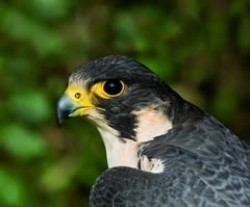
-
Audio Bird Deterrents
Audio bird deterrent methods use predator cry and distress calls of certain bird species. Whereas, most of the distress calls only work for certain bird species, predator cry sounds usually work with most birds.
In order to reduce habituation of the birds, the distress and predator calls are played in an irregular order. Still habituation is possible with most audio bird deterrent systems available. Directional beam systems use very strong audio beams of 150 dB over long distances (up to 1,500m).
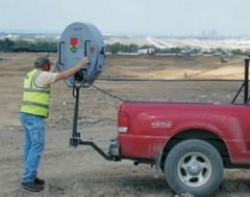
-
Airport Hangar Bird Control
BIRD CONTROL METHODS – Netting
Adjacent landfills/water reservoirs should be netted. Many birds also nest in the large hangers, as they are wind-protected. The netting of large hangers prevents this, and reduces the attractiveness these habitats for birds. Many airports are close to landfill sites for historical reasons. As they are an attractive source of feed for birds netting is often the only solution.
The important characteristics of netting:
- Most netting in hangers is attached by bonding.
- Only ultralight netting, weighing 12g sq m (mesh size 50mm x 50mm) can be used. The netting is incendiary materials class B1.
- The netting is stretched tight and can be easily removed for maintenance purposes.
- The netting is also available with a special coating. This prevents dust and dirt collecting and it stays clean for a long time.
- Netting is suitable for medium to high populations.
- The netting of landfill sites is often the only possibility of preventing birds landing.
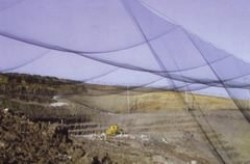
-
BASH-Management
Bird Aircraft Strike Hazard (BASH) management describes all measures that may be used to deter birds at and around airports. A professional approach to avian birdstrike management does not stop at the available bird control measures.
By using latest radar technology, BASH-management can detect hazardous bird activity at an early stage and automatically warn incoming or outgoing aircraft. Implementing BASH management routines at airports is a very important part of managing the airports safety. BASH-management also includes up to date documentation of bird activity and near-miss birdstrikes.
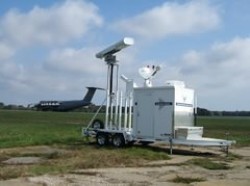
Images
Contact
Offenbacher Landstrasse 74
Frankfurt
Germany
60599
- +49 69 4800 9779
